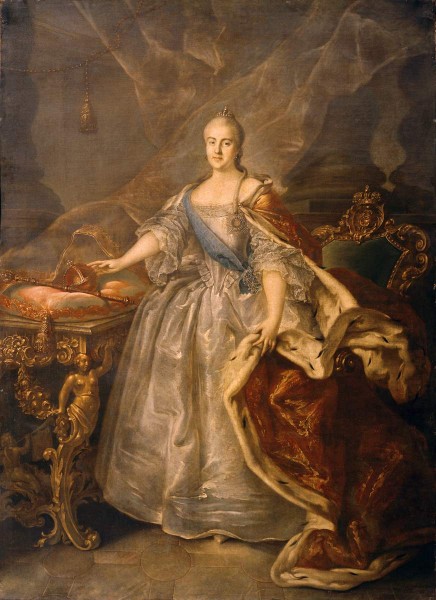The artist is Argunov

+ Virtual excursion &Laquyagilev. START&Raquo >>>
– Hide the text of a virtual tour &Laquyagilev. START&Raquo
The faces of the people of the era named her name will capture the famous painters – Rokotov, Levitsky, Borovikovsky for descendants. But one of the first who, a month after the palace coup, will be honored to write a portrait of a young empress will be a serf artist Ivan Argunov.
The fortress Count Peter Sheremetyev, artist Ivan Argunov, was a student of the German painter George Groot. Having established himself with a talented portrait, Argunov receives an order to create a front portrait for decorating the Senate Hall in St. Petersburg. Since the Sovereign was not supposed to pose a fortress of a fortress, Argunov had to write it “by heart, with notes in the exits”. This meant that the artist needed to remember the facial features of his model, seen in some court celebration, and then, from memory, transfer them to the canvas.
The master introduced Catherine II in full growth, with all the necessary accessories of the coronation portrait: in a brocade dress, a small imperial crown and a mantle, hit by a mining fur, with a power and a scepter lying on a velvet pillow. By August 30, the portrait was presented to the empress before her departure to Moscow for coronation celebrations. Catherine II approved, saying that “work and idea is good, there is also a similarity in the person, and the lower part of her face is similar” and noticed that she would love to pose an artist – “why they didn’t say it, I need to sit most”.
Next to the ceremonial portrait of Catherine II in dense rows, portraits of people of the Catherine era were located in dense rows. Diaghilev, such a amusement, laid the basis of the iconographic principle, that is, the emphasis was placed on the personalities of the depicted, and not on the creative individuals of the masters. The viewer was, as it were, first of all, communication with real “persons”, personifying the state and private life of noble Russia. The second half of the Russian XVIII century revealed before us a multi-color fan of portrait images, where the landowner-chlesol in a home dressing gown is adjacent to a noble nobleman, dressed in a ceremonial uniform or fashionable caftan, and the magnificent beauty of the court ladies, their heavy become, shakes the fragility of children’s images.
E.AT.Amphilokhiev, e.AT.Stankevich and N.AND.Fedorova. Materials for a virtual tour of the exhibition "Diaghilev. Start". 2009
Go to the beginning of the virtual tour “Diaghilev. START”
One of the first “imperial” images of Catherine II, ending shortly before the coronation of the Empress, was performed by the serf artist of Count Peter Sheremetev Ivan Argunov. Having established himself with a talented portrait, he received an order to create a front portrait to decorate the Senate Hall in St. Petersburg. The empress, of course, did not pose a fortress artist, since the close associates did not want to “bother” the sovereign. Argunov was supposed to write her “by heart, with notes in the exits”. This meant that the artist needed to remember the facial features of his model, seen in some court celebration, and then, from memory, transfer them to the canvas.
The master introduced Catherine II in full growth, with all the necessary accessories of the coronation portrait: in a brocade dress, a small imperial crown and a mantle, driven by an ermine fur, with a power and a scepter lying on a velvet pillow, with a ribbon, a cross and a star with diamonds of the Order of St. Andrew the First -Called. The portrait was completed by August 30, 1762, the empress was presented to the empress before her departure to Moscow for coronation celebrations. Catherine II approved, saying that “work and idea is good, there is also a similarity in the person, and the lower part of her face is similar” and noticed that she would love to pose an artist – “why they didn’t say it, I need to sit most”. By order of Catherine II, the portrait was taken to Moscow, where celebrations related to coronation were held.
Ekaterina II (Great; 1729-1796)-nee Princess Sofia Augustus Frederick the Angalt-Tserbst. Born in the German city of Stetin. In 1744, she arrived in Russia as the bride of Grand Duke Peter Fedorovich, the future Emperor Peter III. In the same year she accepted Orthodoxy with the name of Ekaterina Alekseevna and was married to Peter Fedorovich in August 1745. In 1754 she gave birth to an heir, future emperor Paul I. She did not work out with her husband, and Peter III intended to send his wife to the monastery. In the summer of 1762 she headed the guards and overthrew Peter III, becoming an empress. In the early years of government, it adhered to politics "enlightened absolutism", But after the peasant war, led by Emelyan Pugachev (1773-1775) and the great French bourgeois revolution (1789), she was forced to tighten the regime. Woned the victorious wars with Turkey (1768-1774; 1787-1792) and Sweden (1788-1790). During its reign, Russia included Crimea (1783), North Black Sea region, Baltic states, eastern parts of Poland, Aleutian Islands, Russian settlements in Alaska were created, Eastern Georgia was taken under patronage. The prestige of Russia in Europe has grown many times. Olga Savenkova. Exhibition catalog in Malaga "The Romanov dynasty". 2017. With. 229.
Leave a Reply